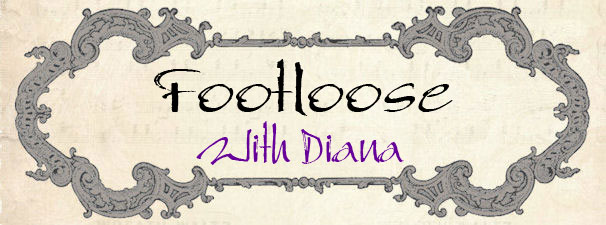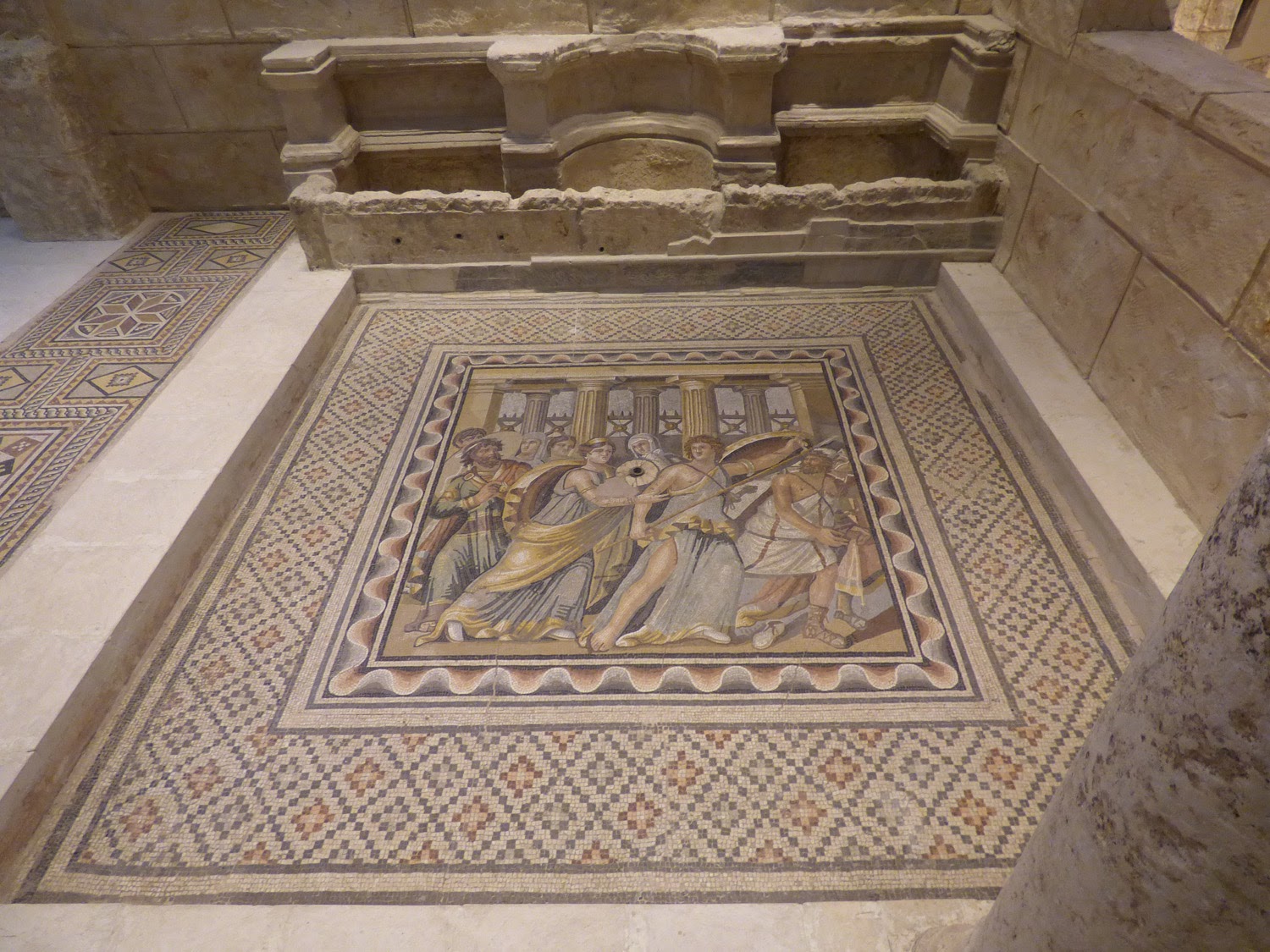Zeugma is an ancient Commagene (remember them?) city, named for a crossing on the Euphrates River. Originally Greek, it was conquered by the Romans in 64 BC and became very important because it was on the Silk Road. Destroyed by the Sassanids in 256 AD, the city never really recovered its former glory, although it continued to be part of the Roman Empire under Byzantium; Arab raids ultimately led to it being abandoned. Although considerable excavations have been being carried out at the site, they (and the site itself) were and are threatened by the damming of the Euphrates. There's been considerable response and help from the international community to salvage what's possible of the portions of the site that were to be submerged.
Gaziantep has built a wonderful mosaic museum to display what's come from ancient Zeugma. It exploits the latest technology and touch-screens to provide museum-goers with information; there's even an amazing shallow mosaic pond with fish and water plants, just as it would have been in a Roman villa, projected onto a section of flooring. When you walk through the projection, the fish and plants move away from your feet, yet you never cast a shadow that blocks any part the image! Except for not getting your feet wet, it's exactly like walking through a shallow pool. I have no idea how they do it, but it's very clever and very dramatic. It was a bit gloomy when we arrived...
...but it cleared in fits and starts:
A headless statue on the forecourt:
...and a grave stele:
A sarcophagus:
The pièce de résistance in the museum is a fragment of a mosaic dubbed "The Gypsy Girl," although she certainly isn't likely to be a gypsy at all:
Although the museum is dedicated to mosaics, there is a particularly charming bronze statue of the god Ares:
Below him are the remains of a Roman bath and toilet:
OK, on to the main event - the mosaics. Here's where I strong recommend you click on the photos to see them larger so you can really tell how very fine they are. You may have to do some Googling, too, to be reminded who the mythical characters depicted are! This one depicts Achilles:
And this depicts Acratus and Eusophryne:
Andromeda and Perseus with the head of Medusa:
Antiope and a satyr:
Daedalus and Icarus:
The goddess Demeter:
Dionysis Telete and a satyr:
Eros and Psyche:
Europa:
Figure depicting the Euphrates River:
Oceanus and Thetis:
River gods:
Stay tuned - there will be more in the next post!
Gaziantep has built a wonderful mosaic museum to display what's come from ancient Zeugma. It exploits the latest technology and touch-screens to provide museum-goers with information; there's even an amazing shallow mosaic pond with fish and water plants, just as it would have been in a Roman villa, projected onto a section of flooring. When you walk through the projection, the fish and plants move away from your feet, yet you never cast a shadow that blocks any part the image! Except for not getting your feet wet, it's exactly like walking through a shallow pool. I have no idea how they do it, but it's very clever and very dramatic. It was a bit gloomy when we arrived...
...but it cleared in fits and starts:
A headless statue on the forecourt:
...and a grave stele:
A sarcophagus:
The pièce de résistance in the museum is a fragment of a mosaic dubbed "The Gypsy Girl," although she certainly isn't likely to be a gypsy at all:
Although the museum is dedicated to mosaics, there is a particularly charming bronze statue of the god Ares:
Below him are the remains of a Roman bath and toilet:
OK, on to the main event - the mosaics. Here's where I strong recommend you click on the photos to see them larger so you can really tell how very fine they are. You may have to do some Googling, too, to be reminded who the mythical characters depicted are! This one depicts Achilles:
And this depicts Acratus and Eusophryne:
Andromeda and Perseus with the head of Medusa:
Antiope and a satyr:
Daedalus and Icarus:
The goddess Demeter:
Dionysis Telete and a satyr:
Eros and Psyche:
Europa:
Figure depicting the Euphrates River:
Oceanus and Thetis:
River gods:
Stay tuned - there will be more in the next post!





















No comments:
Post a Comment